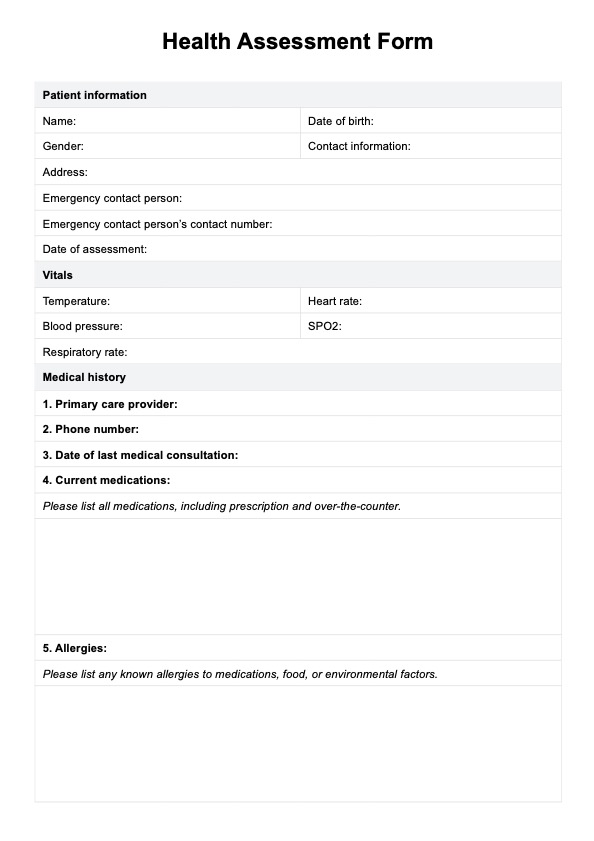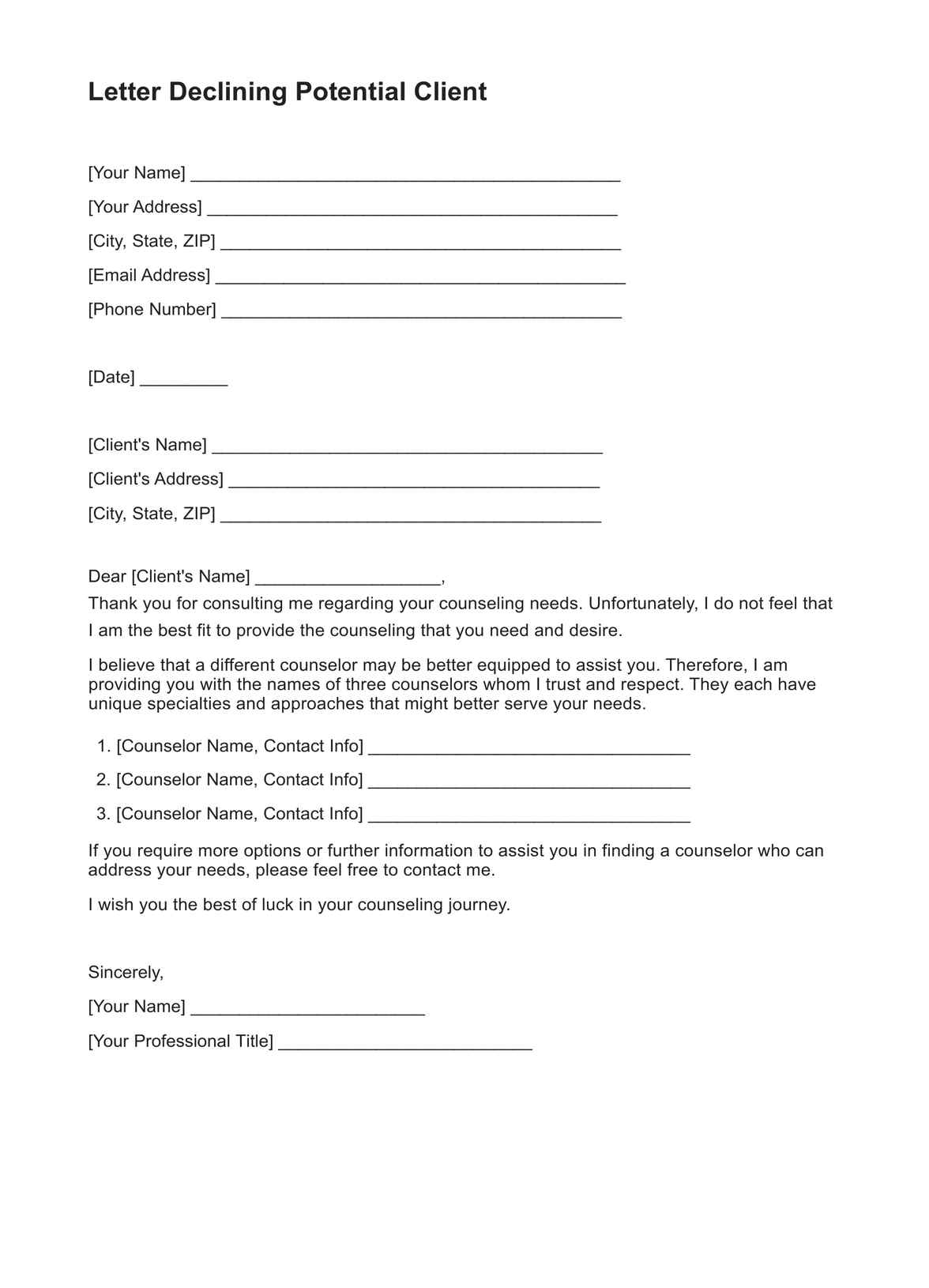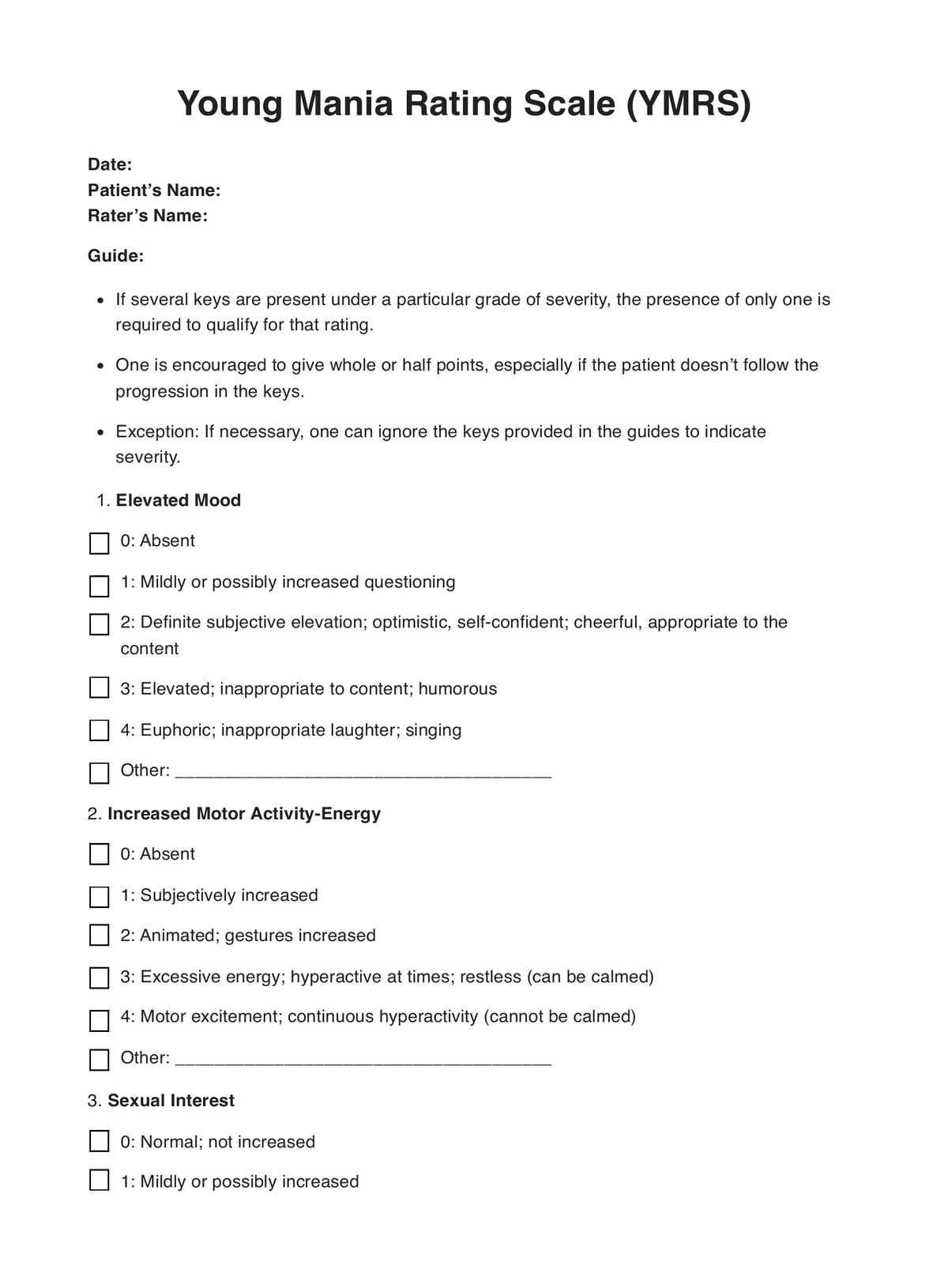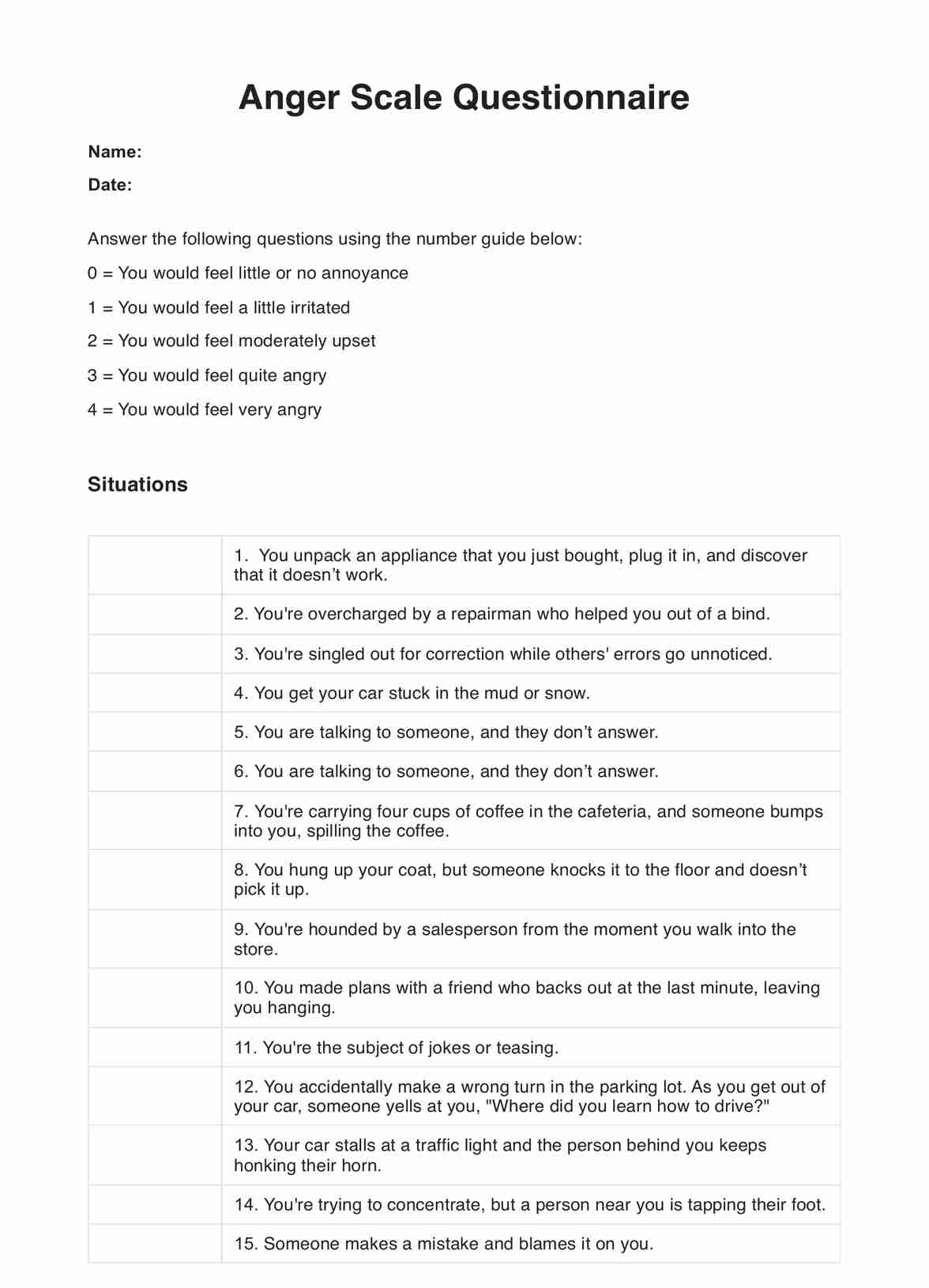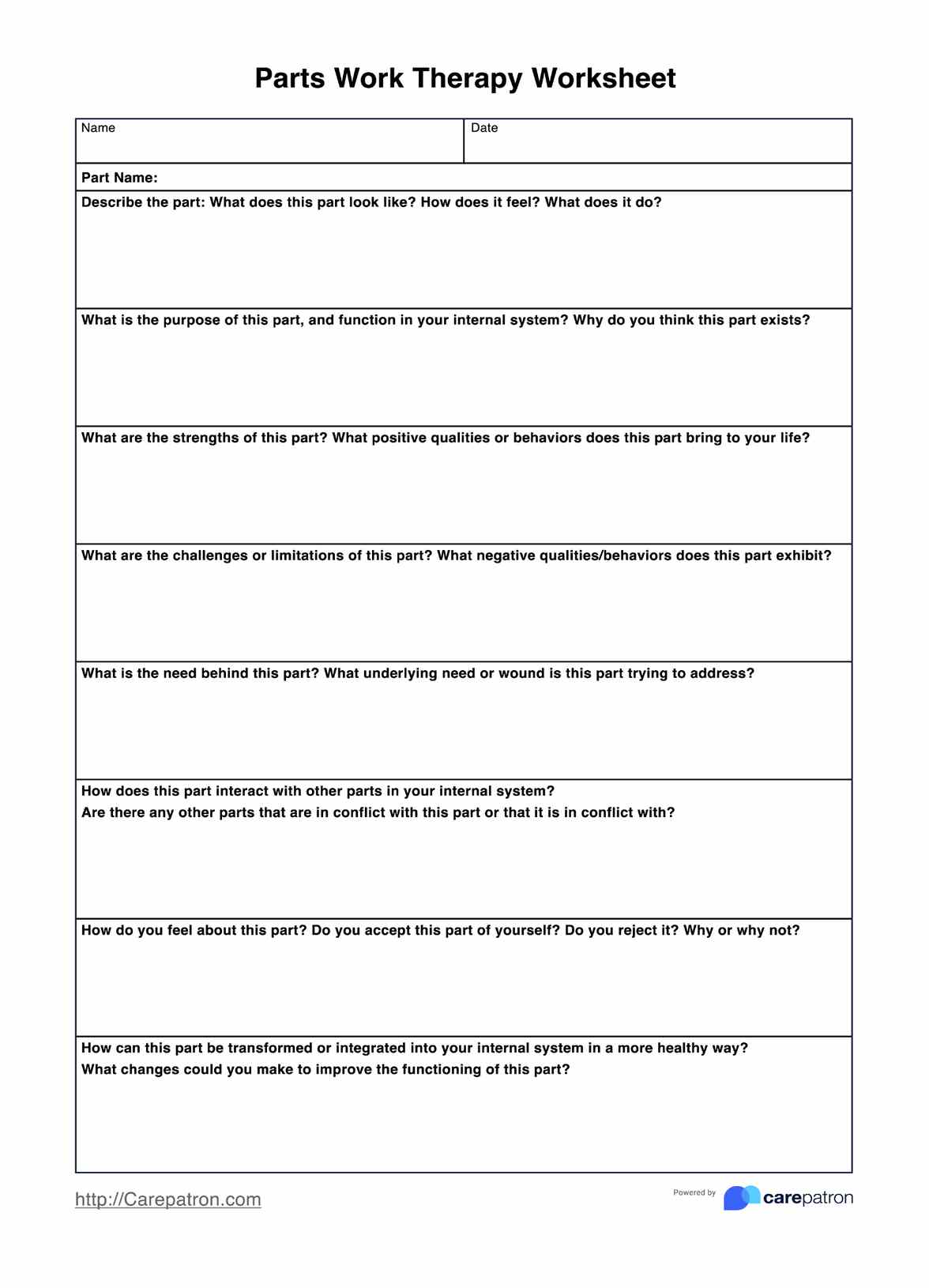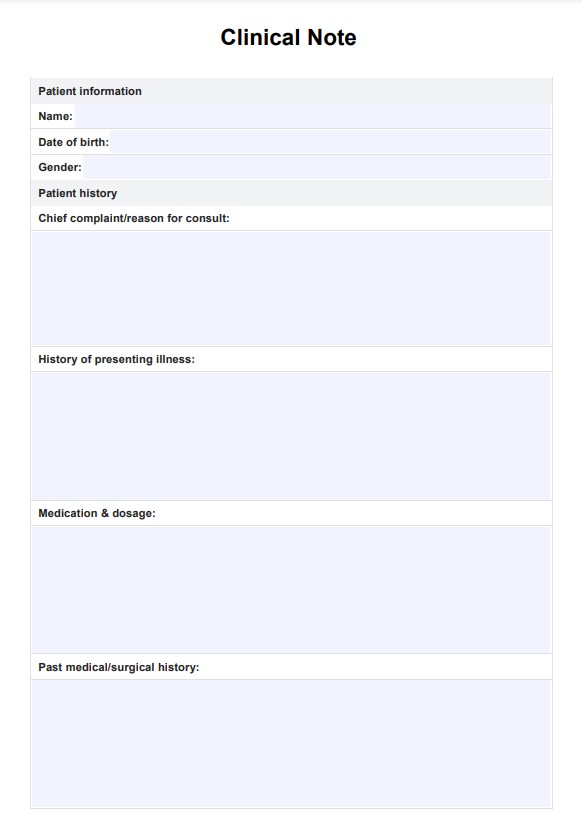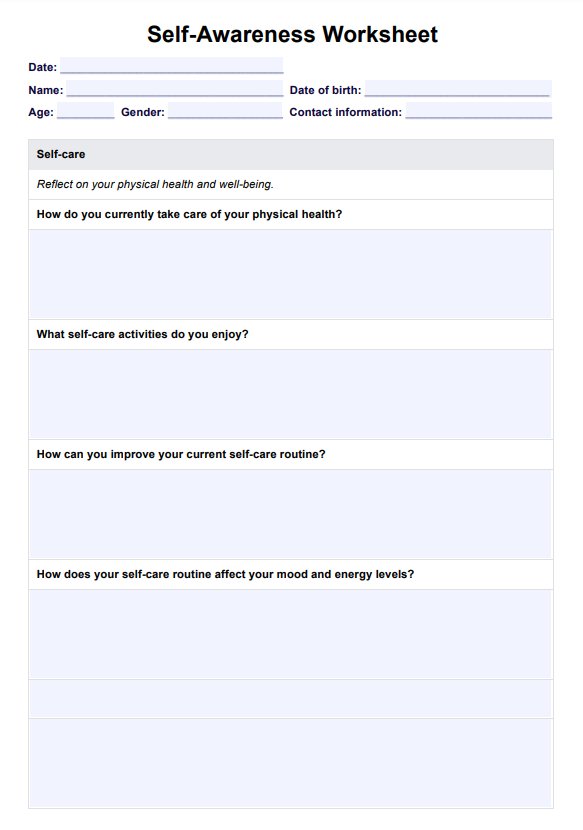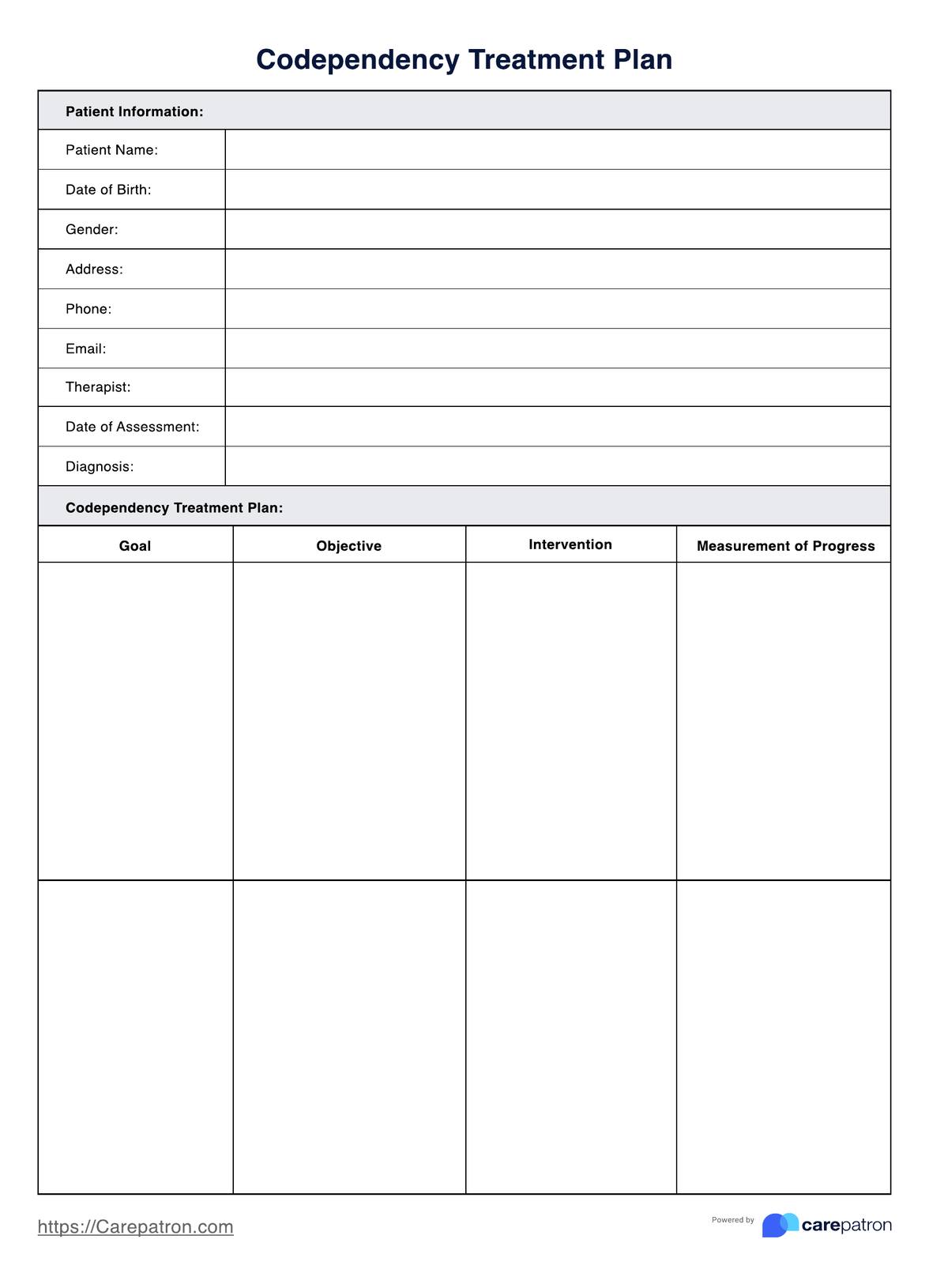CBT Thought Record Templates
Have a client struggling with intrusive or unhelpful thoughts but don’t know where to start? Our CBT Thought Record is a perfect jumping-off point to introduce your clients to thinking about thinking and dipping their toes into the hugely beneficial concepts of Cognitive Behavioral Therapy.


What is a CBT Thought Record Template?
Cognitive behavioral therapy (CBT) is one of the most widespread therapeutic techniques worldwide. It is based on the principle of targeting cognitive distortions to improve a client's behavior and mood. Various strategies are used to target a client's cognitive distortions, with the first step almost always being to identify negative thinking.
That's why we have created this simple but effective template. This CBT Thought Record Template doesn't ask your client to engage in anything further than identifying automatic thoughts they wish to explore, how this thought impacted their behavioral and physical response, and whether they can detect unhelpful thinking styles.
Other thought records also allow your client to challenge their negative thoughts by weighing evidence for and against them and creating a rational counterstatement to replace their original thought. While these are undoubtedly helpful strategies to learn, for many clients, writing down thoughts and thinking about their thinking can already be a lot to learn – so this simple CBT Thought Record is an excellent place for them to start.
CBT Thought Record Templates Template
CBT Thought Record Templates Example
How to use this CBT Thought Record Template
Thought records help make negative automatic thoughts visible, aiding clients in identifying both positive and negative emotions. This process enables them to challenge unhelpful thought patterns and develop strategies to improve the quality of their thoughts. To use our CBT Thought Record Template, follow these steps:
Step 1: Download
You can download your editable PDF version of our CBT Thought Record template using the link on this page.
Step 2: Explain the activity to your client
Before providing your client with the CBT Thought Record template for them to complete on their own, give some background information on why it will be helpful for them to document their thoughts and how to complete each section. Help them identify emotions,
Step 3: Discuss or analyze your client's responses
The completed CBT Thought Record can serve as a great discussion starter. In completing this activity, you and your client will likely be able to discern valuable patterns in their thinking, which can inform any decisions for their therapy going forward.
Step 4: Store the thought record
The last step is to ensure the completed CBT Thought Record is stored securely with the rest of your client's therapeutic record, containing sensitive and confidential patient health information.
Who can use this printable CBT Thought Record Template (PDF)?
Thought records help in cognitive restructuring and are widely used in CBT. This versatile template supports mental health practitioners across various applications in cognitive behavior therapy. These may be professionals who routinely see clients with mental health disorders such as anxiety disorders, depression, or other mood disorders.
Some of these professionals might be:
- Psychotherapists
- Clinical psychologists
- Social workers
- Mental health counselors
- Psychiatrists
- Psychiatric nurses
- Mental health workers
Benefits of CBT Thought Record Template
This template CBT thought record worksheet offers the following benefits:
Introduce your client to CBT concepts
It can be daunting for a client, particularly one new to therapy, to start hearing so many new terms and learning to think in an entirely new way. This template can be a great way to help ease their introduction to these standard CBT practices, allowing them to engage with their thoughts in their own time.
Provide a stepping stone to more complicated CBT practices
That said, we understand that merely documenting thoughts is not enough to bring about significant changes in your patient's cognition. You'll likely guide your client in actively engaging with and challenging these thoughts using tools like the cognitive restructuring worksheet. Starting with this CBT Thought Record prepares them for these more advanced techniques.
Gain insights into your client's thought process
Seeing real-life examples of how your patient responds to specific situations and hearing their thoughts in their own words can be an invaluable resource for a practitioner. These insights can help you and your client understand areas to work on in therapy and target their treatment accordingly.
Make informed therapeutic decisions
Your clients' responses to the CBT Thought Record task can also help inform you and other care team members of the best therapeutic and treatment decisions in the future. Basing their treatment decisions on evidence such as a thought record is a great way to ensure your client receives an individualized and effective treatment plan.
Engage your client in their therapy
Finally, this CBT Thought Record is a great way to keep your client engaged even between sessions with you. This helps to maintain consistency and improve treatment outcomes as progress is not limited to a single, often weekly, session with you.
Commonly asked questions
We will all have more thoughts than we could ever remember in a single day. Some will be positive, some negative, and some you may not have any strong emotional connection to. This CBT Thought Record is designed to target what are referred to as “hot thoughts” or thoughts that cause some kind of physical and emotional reaction, such as distress, anxiety, or sadness. That being said, any thought could work in this thought record as long as it is a thought you want to explore further and practice analyzing.
This will depend on your ability to find a quiet place and a few minutes to think through each of the prompts for your CBT Thought Record entry. If you notice a thought you want to record but don’t have time to fill out the rest of the columns, just add the date and the thought, and you can come back and fill in the rest when you have time. Another approach could be to save some time in the evening to reflect on thoughts you’ve had during the day and fill out all parts of the thought record then.
There are no requirements as to who can complete a CBT Thought Record. Anyone who would like to work on exploring their thoughts, how they affect their behavior and mood, and how to counteract them can benefit from using this CBT Thought Record.


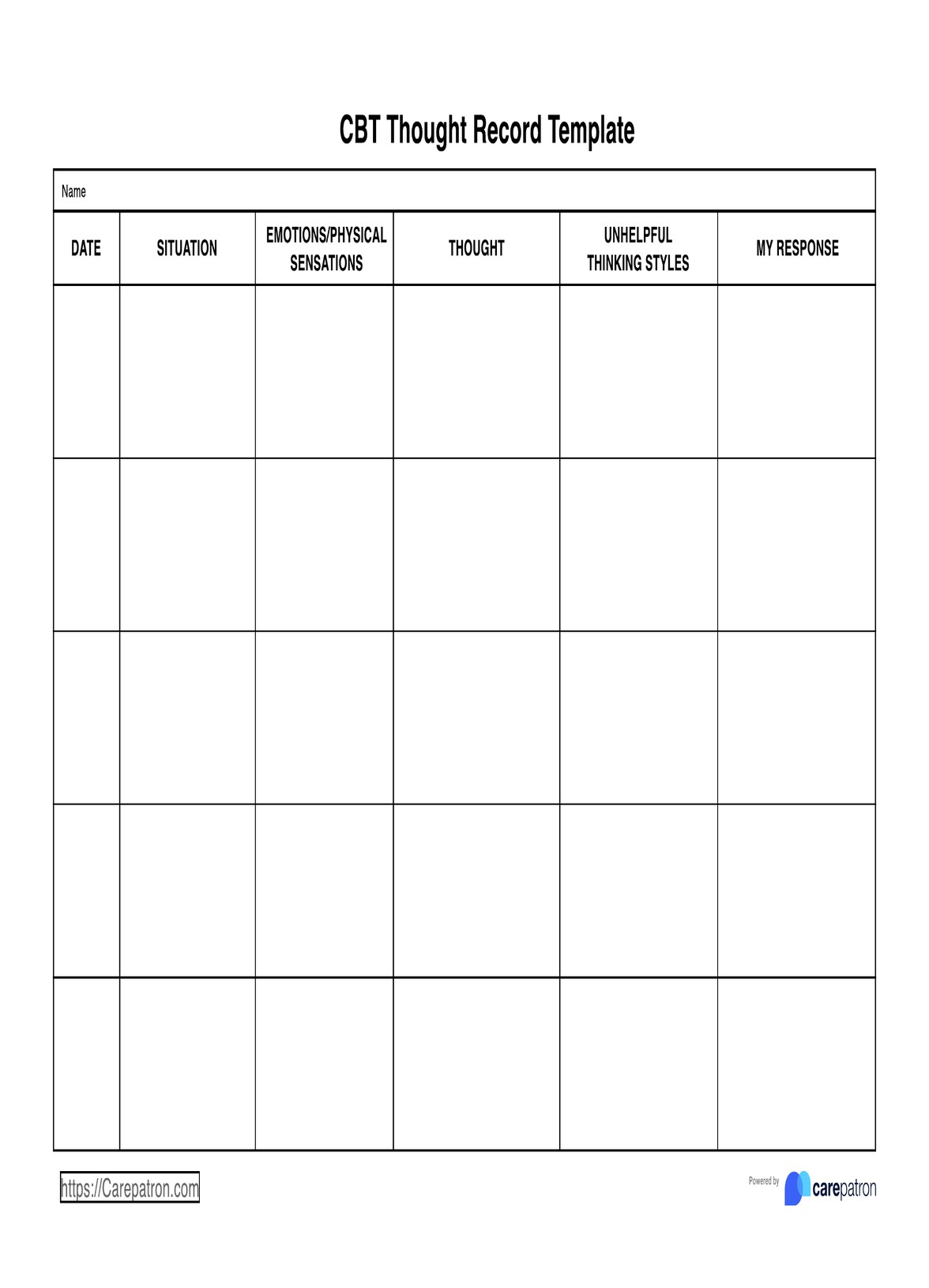
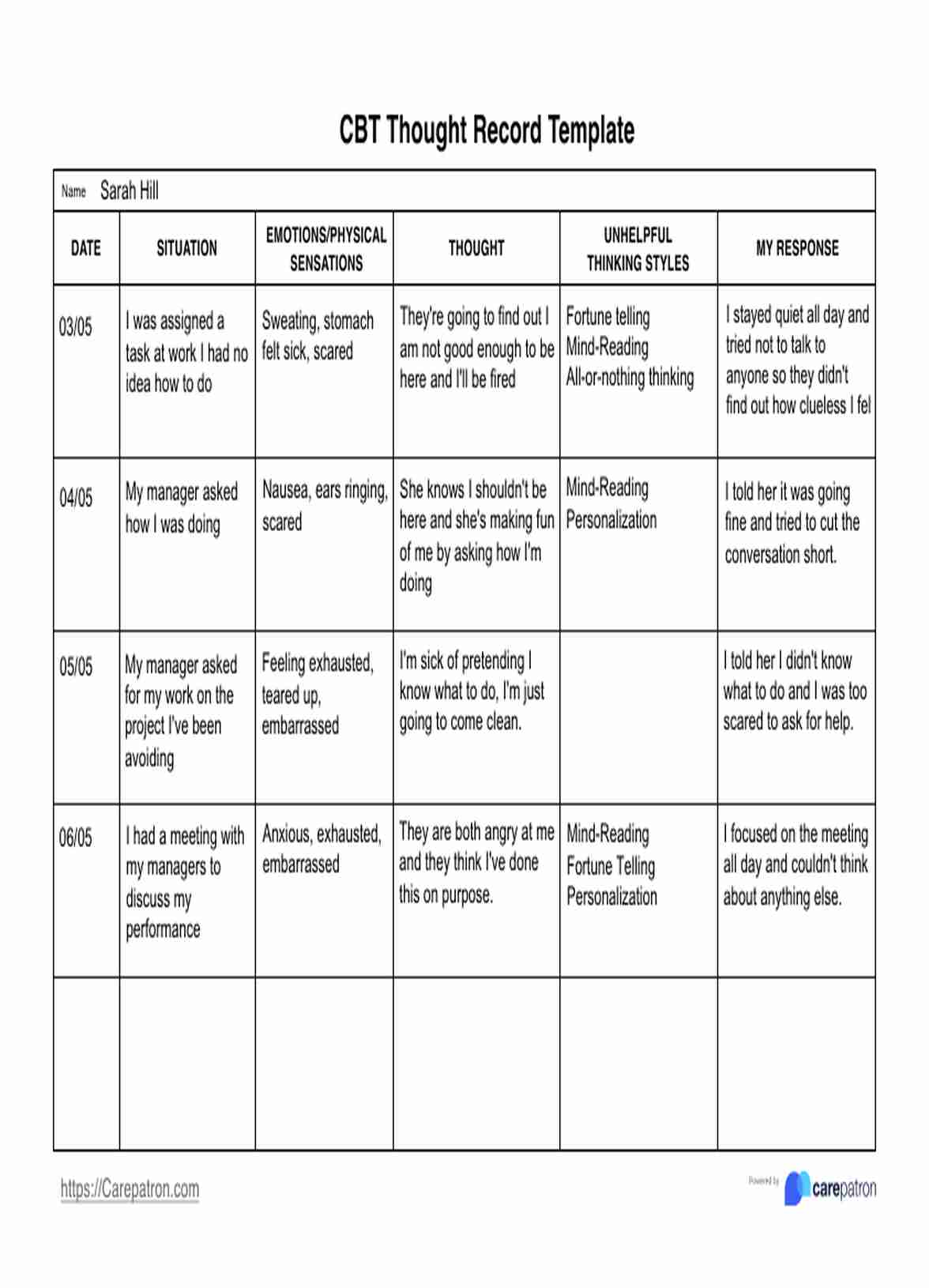

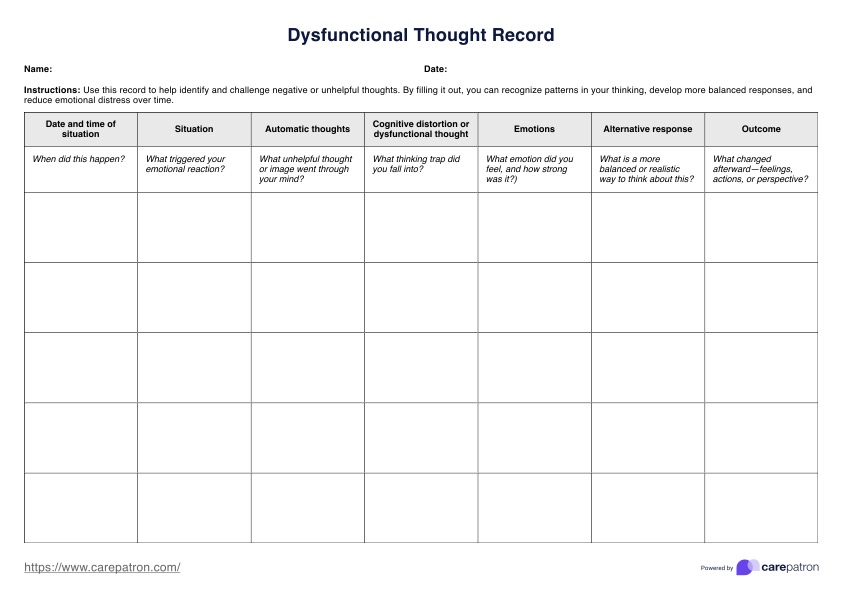
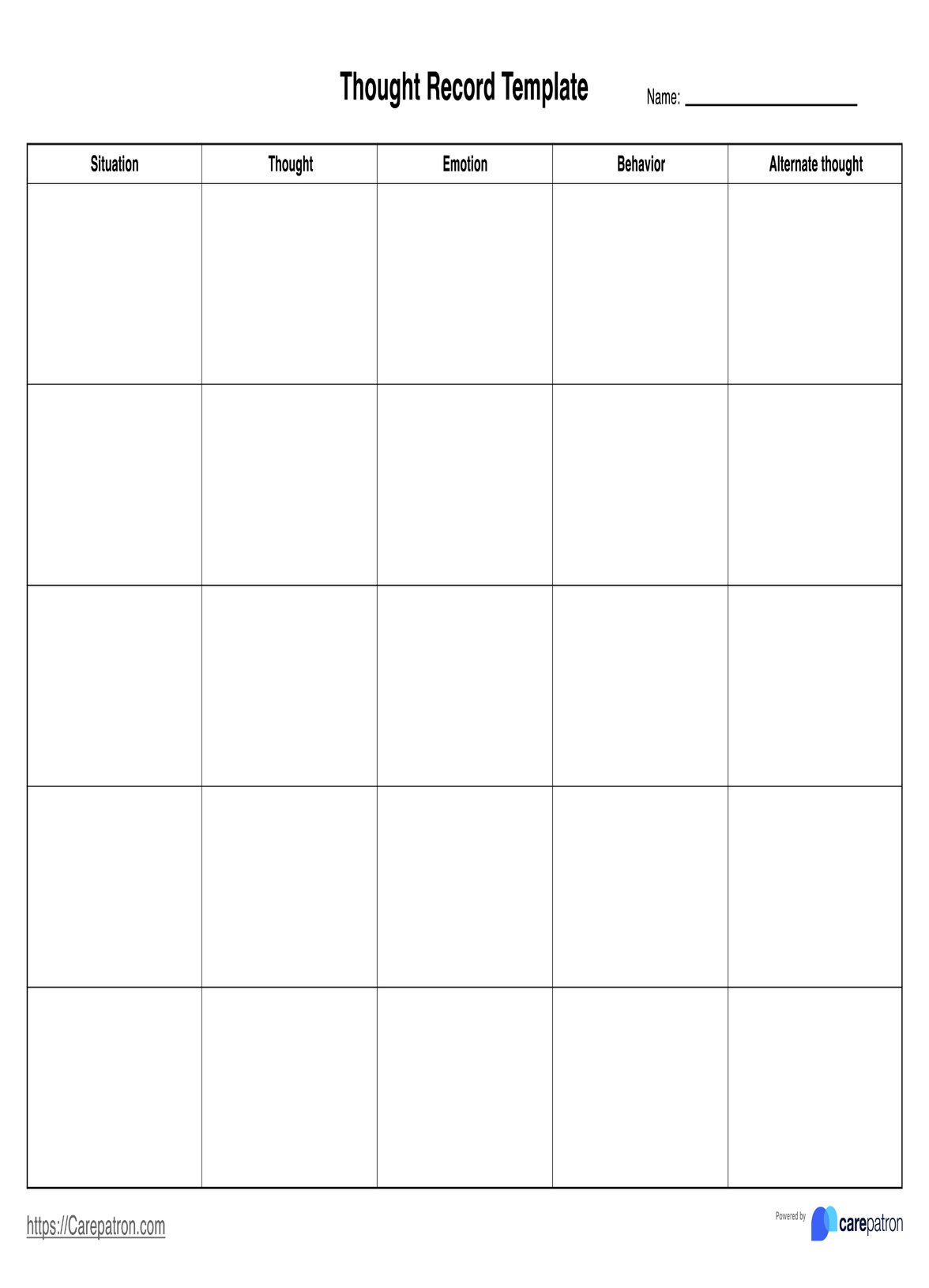














-template.jpg)





















































































